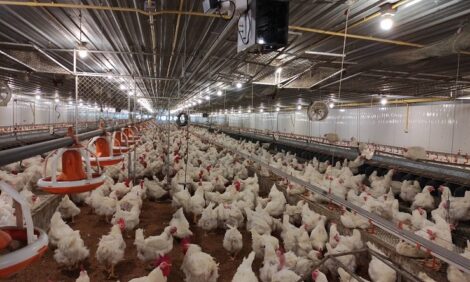



Food Safety Authority Calls for More Campy Control
IRELAND - A new scientific report outlines practical recommendations to reduce the incidence of Campylobacter in poultry and consumers.A scientific report published today by the Food Safety Authority of Ireland (FSAI) highlights that Campylobacter is the number one bacterial cause of foodborne illness in Ireland. Recommendations for a Practical Control Programme for Campylobacter in the Poultry Production and Slaughter Chain sets out a range of new measures to tackle the problem and thus protect consumer health in relation to these harmful bacteria.
Produced by the FSAI's Scientific Committee, the report recommends a series of practical measures to be taken by poultry farmers, processors and retailers to reduce the incidence of the harmful Campylobacter bacteria in poultry.
Professor Alan Reilly, CEO of FSAI stated: "Campylobacter causes approximately four times more illness than Salmonella in Ireland."
In 2009, 1,808 cases of campylobacteriosis were reported and the provisional figure for 2010 is 1,666 .
Professor Reilly added: "We believe there is substantial under-reporting of the illness and as such, these figures in reality could be considerably higher. What is particularly worrying is that we are seeing one- to four-year-old Irish children having the highest incidence of the illness. There were 165 cases per 100,000 of the population within that age-group reported in 2009. Measures must be taken by all parties to limit the risk of people becoming ill from these bacteria."
Campylobacter infections can cause acute gastroenteritis with diarrhoea, abdominal pain and fever, and can be severe and life-threatening in vulnerable people, such as the very young, the old and those with any underlying health condition. Similar to all bacteria found naturally on meat and poultry, the danger posed by Campylobacter can be removed by thoroughly cooking products and by preventing cross-contamination between raw meat and ready-to-eat foods.
The FSAI's Scientific Committee's report considers a European finding that handling and preparation of chicken and consumption of undercooked chicken meat accounts for approximately 30 per cent of human cases of campylobacteriosis. The scientific report recommends that the poultry industry develops and implements its own voluntary code of practice based on the recommended control measures detailed in the report. The report also recommends:
- Improved on-farm hygiene and restricting access to possible source of contamination
- A voluntary monitoring programme on the farm and in the slaughterhouse to alert farmers and processors when additional controls are needed and to enable them to assess the effectiveness of their control measures
- Raw chicken is packaged in leak-proof packaging
- Safe handling and cooking instructions should be clearly visible [on labels or in butchers] at time of purchase, and
- Labels on whole birds should advise consumers that carcasses are ready-to-cook and that in the interests of safe handling, washing of the carcass should be avoided, as this can significantly spread contamination around the kitchen.
According to Professor Reilly, a recent European study has shown that some 83 per cent of Irish flocks presented for slaughter and 98 per cent of whole birds at the end of the slaughter process are contaminated with Campylobacter.
He continued: "The current level of contamination of chicken with Campylobacter needs to be reduced to improve public health. The Irish poultry industry has been very effective in reducing Salmonella on poultry and now needs to make further improvements to address the Campylobacter problem."
Emphasising the need for action throughout the poultry distribution chain, Professor Reilly said: "Retailers have a role to play in helping the poultry processors to implement measures to control Campylobacter and by speeding up the introduction of leak-proof packaging for retail display of poultry."
Caterers and the public can also take action to reduce the risk of campylobacteriosis from eating poultry. Poultry needs to be cooked thoroughly until the juices run clear and there is no pink meat remaining. Hand washing and disinfection of surfaces are essential after handling and preparing raw poultry. It is important that raw poultry does not come into contact with ready-to-eat foods during storage in the fridge or during preparation before cooking. Washing raw poultry is also not recommended as this tends to spread harmful bacteria around the kitchen in water droplets.
Professor Reilly concluded: "When people are shopping they need to pack raw meat and poultry into a dedicated bag to keep it separate from other foods. They should only ever use that bag for raw meat and poultry and should wash and disinfect it regularly. This will prevent harmful bacteria from the outside of poultry and meat packaging from contaminating other foods."
To read the report, Recommendations for a Practical Control Programme for Campylobacter in the Poultry Production and Slaughter Chain, click here.








